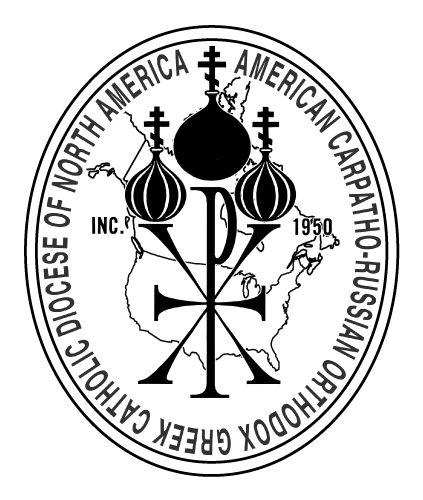Carpatho-Rusyn Prostopinije: The "Kiev" Chant and the Prokimen Tones |
Two Traditions of ChantIn our previous article, we discussed the znamennyj chant, the oldest element in the system of eight hlasy ("tones" or "modes") of the Carpatho-Rusyn prostopinije. We also observed that from the late fifteenth century on, the church singing of the Eastern Slavs split into two traditions, the "Muscovite" tradition (followed in the Grand Duchy of Moscow, and based on Novgorod church singing) and the "Ruthenian" tradition (followed in the Lithuanian-Polish state and in the Hungarian-ruled Carpathians). Both were originally based on the znamennyj chant, but some melodies, especially those sung from memory rather than from books, developed rather differently in the two traditions, and the distinctive Ruthenian forms of these melodies are called in Russian terminology "Kiev chant." Kiev ChantThis name is not applied to melodies of the eight-hlas system in chant books of the Ruthenian traditions; it arose only when the Muscovites came into contact once again with the Ruthenian chant, in the 1650s, when the city of Kiev passed from Polish-Lithuanian to Muscovite rule. Cantors from Kiev were brought to Moscow, where they introduced a number of Ruthenian chant melodies, introducing distinctive variants of melodies based on znamennyj tradition, especially those commonly sung from memory. These are an important element in the Carpatho-Rusyn prostopinije, where, of course, they are not designated "Kiev chant". The most important of these are the melodies for prokimny and for the stichiry samohlasnyja. Prokimny
The prokimen is an ancient way of singing psalms. One selected
verse from a psalm is sung; then one or more other verses from the
same psalm are "read" in the liturgical recitative (intoned on a
single note), the sung verse being repeated after each of the read
verses. Prokimny, Troparia, and KontakiaFormerly, when the troparia appointed for each day had no proper melodies, they were read as far as the last phrase of the text, and that phrase was sung to the appropriate prokimen tone. This method is still used for some special troparia at Christmas and Epiphany, and was also applied to the kondak of Matins at St. Nicholas Monastery, Mukachevo. More elaborate versions of the prokimen tones, to which Boh Hospod' and the end of the tropar' were sung at Matins, are still known in both Muscovite "znamennyj" and Ruthenian "Kiev" versions, although they are no longer used much. The "Kiev" prokimen tones usually repeat the last half of the text of the psalm verse (called okonËanije), in contrast to the Muscovite versions. Local variationsThe oral transmission of these melodies has led to the development of local variants, whose connection with one another is not always obvious. The short text of the prokimen makes it convenient to compare a number of variants. The relationship between the Carpatho-Rusyn prostopinije and other representatives of the znamennyj-"Kiev" chant family can be clearly seen in such a comparison.
|
|
By Steven Reynolds, University of Oregon. From the "Carpatho-Rusyn American", Vol. II (1979), No. 4, published by the Carpatho-Rusyn Research Society. |

